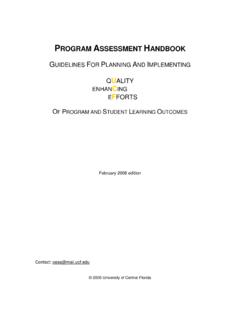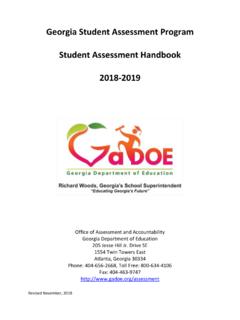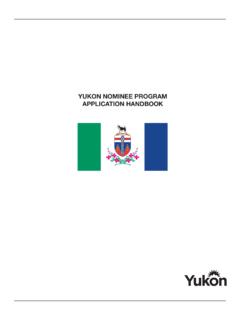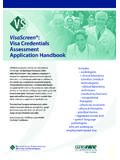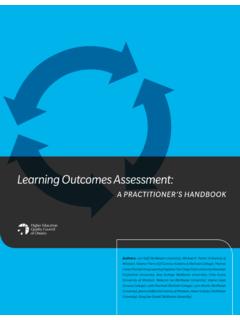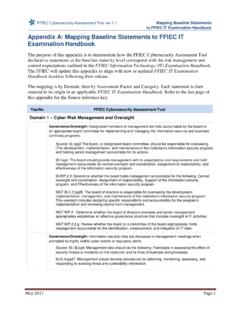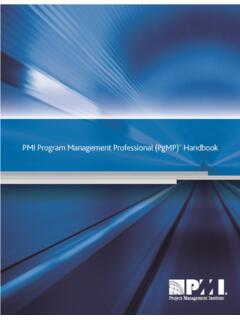Transcription of Playing by the Rules - HUD.gov / U.S. Department of ...
1 Department OF HOUSING AND URBAN DEVELOPMENT Office of Community Planning and Development Community Development Block Grant Program Playing by the Rules A Handbook for CDBG Subrecipients on Administrative Systems March 2005 HUD-2005-05-CPD Playing by the Rules A Handbook for CDBG Subrecipients on Administrative Systems Department of Housing and Urban Development Office of Community Planning and Development Community Development Block Grant Program Updated Reprint March 2005 Playing by the Rules A Handbook for CDBG Subrecipients on Administrative Systems Page iii TABLE OF CONTENTS CONTENTS PAG E PROLOGUE: A MESSAGE TO CDBG SUBRECIPIENTS .. vi INTRODUCTION .. 1 1 How to Use This Handbook .. 1 2 Summary of Principal Regulations Governing CDBG Administrative Systems .. 1 3 FINANCIAL MANAGEMENT .. 2 1 Overview .. 2 4 Internal Controls .. 2 4 Accounting Records .. 2 6 Allowable Costs .. 2 8 Source Documentation .. 2 11 Budget Controls.
2 2 13 Cash Management .. 2 13 Financial Reporting .. 2 16 Other Miscellaneous Requirements for Subrecipient Financial Management Systems .. 2 17 Exercise for Chapter Financial Management .. 2 19 PROCUREMENT AND CONTRACTING .. 3 1 General Procurement Provisions .. 3 3 Permitted Approaches to Procurement .. 3 6 Bonding .. 3 9 Use of Local Businesses; Contracting with Small, Minority, and/or Women-Owned Businesses .. 3 10 Exercise for Chapter Procurement and Contracting .. 3 11 PROPERTY MANAGEMENT AND DISPOSITION .. 4 1 Overview .. 4 4 Real Property .. 4 4 Personal Property Equipment .. 4 5 Personal Property Supplies .. 4 8 Personal Property Copyrights .. 4 8 Playing by the Rules A Handbook for CDBG Subrecipients on Administrative Systems Page iv Exercise for Chapter Property Management and Disposition ..4 9 RECORD-KEEPING AND REPORTING 5 1 General Record-Keeping Requirements .. 5 3 File Organization and Maintenance.
3 5 5 Retention of Records .. 5 7 Access to Records .. 5 7 Reporting Requirements .. 5 7 Exercise for Chapter Record-Keeping and Reporting Requirements .. 5 14 OTHER ADMINISTRATIVE AND PROGRAM REQUIREMENTS .. 6 1 Program 6 3 Programmatic and Budget Changes .. 6 4 Civil Rights and Fair Housing; Employment and Contracting Opportunities .. 6 5 Labor Standards .. 6 8 Environment Requirements .. 6 8 Historic Preservation .. 6 9 National Flood Insurance Program .. 6 9 Floodplain Management .. 6 9 Relocation, Real Property Acquisition, and One-for-One Housing Replacement .. 6 10 Lead-Based Paint .. 6 10 Political Activity .. 6 13 Conflict of Interest .. 6 13 Program Monitoring .. 6 14 Suspension and Termination .. 6 14 Exercise for Chapter Other Administrative and Program Requirements .. 6 15 AUDITS .. 7 1 General Audit Requirements .. 7 3 Internal Control and Compliance Review .. 7 4 Audit Reports .. 7 4 Auditor Selection/Procurement.
4 7 5 Audit Costs .. 7 6 Audit Review and Resolution .. 7 6 Exercise for Chapter Audits .. 7 9 Playing by the Rules A Handbook for CDBG Subrecipients on Administrative Systems Page v CLOSEOUT .. 8 1 Overview .. 8 3 Closeout Procedures .. 8 3 Cost and Cash Adjustments .. 8 4 Continuing Subrecipient Responsibilities .. 8 5 Exercise for Chapter Closeout .. 8 6 EXHIBITS: 1-1 Regulatory Framework for CDBG Entitlement Program .. 1 7 4-1 Rules for Property Management and Disposition .. 4 2 5-1 Record-Keeping Checklist for Tracking Activities .. 5 11 Playing by the Rules A Handbook for CDBG Subrecipients on Administrative Systems Page vi PROLOGUE: A MESSAGE TO CDBG SUBRECIPIENTS As Community Development Block Grant (CDBG) subrecipients, you are an indispensable part of the CDBG Entitlement program. You provide grantees and the Department of Housing and Urban Development (HUD) with assurance that the diverse communities, groups, and individuals whom the CDBG program is intended to serve are in fact reached by the program.
5 Your participation provides: Access to, and knowledge of, the specific neighborhoods and beneficiaries served by the program. Technical and managerial capabilities that might not otherwise be available to grantees. A mechanism for assuring citizen participation by involving the intended beneficiaries in the design and delivery of those services. Without your continued involvement and support, the CDBG program could not address the broad range of needs in our communities. Whether you are a governmental agency, a non-profit organization, or a for-profit entity, HUD and the more than 1,000 CDBG Entitlement grantees count on you to make sure that needed services are delivered in a cost-effective way. This is not an easy task. Despite numerous accomplishments in program delivery, many of you have encountered administrative problems in achieving your mission; hence, the motive for this handbook. Common Subrecipient Problems The majority of difficulties experienced by subrecipients lay in the area of financial management, administrative systems, documentation, and record keeping.
6 Many of these problems are attributed to: Limited experience in dealing with Federally-funded programs . Lack of adequate staffing or financial resources available on a consistent basis. Limited understanding about how to meet the complex administrative requirements that must be satisfied in using Federal funds for CDBG activities. Limited oversight, communication, or management support from grantees. Playing by the Rules A Handbook for CDBG Subrecipients on Administrative Systems Page vii Subrecipient Responsibilities You and your grantees share joint responsibility for carrying out permitted activities in conformance with applicable Federal requirements. Grantees and subrecipients are partners. Both partners must accept the fact that there is no such thing as a free lunch. In return for Federal funding, grantees and subrecipients agree to comply with the laws and regulations governing the use of those funds. A central principle is that most of the Federal requirements imposed on the grantee are passed along to you, the subrecipient.
7 As more experienced subrecipients can attest, the more you know about the Rules , the more efficient you can be in designing and conducting your activities. Playing by the Rules does not detract from your performance; it enhances it (and enables you to continue receiving funds). Regulatory compliance and performance go hand-in-hand. Performance measurement is an effective management technique that enables grantees to analyze the benefits of their investments. It is a mechanism that tracks the progression of proj ects and evaluates their overall program effectiveness. The CDBG program requires that each grantee submit a performance and evaluation report concerning the use of CDBG funds, together with an assessment of the relationship of the use of funds to the objectives identified in the grantee s Consolidated Plan. Subrecipients should also establish goals and measure their performance in a manner consistent with the grantee s performance measurement system. In using Federal funds the cardinal rule is: documentation.
8 The achievement of program goals and the completion of activities must be supported by adequate documentation of the facts. If your activities, personnel, procedures, expenditures, and results are not documented properly, from the Federal Government s perspective, you have not done your job, regardless of your accomplishments. Appropriate records are the lifeblood of all successful CDBG agencies. Finally, successful CDBG programs depend upon the commitment of grantees and subrecipients to effective management practices. These include: (1) supporting cooperative, problem-solving relationships among HUD, grantees, and subrecipients; (2) working toward continuous improvement in regulatory compliance and timely program performance; (3) maintaining open and frequent communications among all participants; and (4) focusing on preventing problems first, rather than curing them later. Such a commitment to effective management will assure that the minimum requirements specified in the handbook and the training do not become maximums for either grantees or subrecipients.
9 This handbook is designed to help you understand the administrative requirements that apply to the use of Federal funds for the delivery of CDBG programs and activities. Not surprisingly, you will find the bulk of these requirements reflect common sense and good business practices, like balancing your checkbook or shopping for the lowest price. We hope that what you learn from this handbook about meeting CDBG administrative requirements will save you from major headaches later on. Playing by the Rules A Handbook for CDBG Subrecipients on Administrative Systems Page viii You will also recognize that most of the standards presented in this handbook represent the minimum requirements prescribed by Federal regulations, not optimum or maximum. Therefore, we hope your agency will resist the temptation to allow these standards to become maximums for its activities, but rather, will seek to use these regulations as a path to optimum performance and full achievement of all your goals.
10 This handbook had not been updated since its first printing in 1993. The changes currently being made reflect the incorporation of OMB Circulars A-102 and A-110 into the HUD Common Rule at 24 Code of Federal Regulations (CFR) Parts 84 and 85, as well as changes to the CDBG regulations that were made between 1993 and 2003. Experience has shown that activities undertaken by subrecipients are potentially high risk. Many subrecipients have excellent intentions but use volunteers or inexperienced staff who don t know Federal requirements. In our efforts to promote timely expenditure of CDBG funds, we also found that delays in subrecipient activities were a cause for grantee failure to comply with the timeliness requirements at 24 CFR Over 10 years have passed since CPD first issued the three related publications dealing with subrecipients. This material is now being updated because in the intervening years, some administrative requirements have changed, grantees and subrecipients have experienced staff turnover, and new subrecipients are participating in the program.










